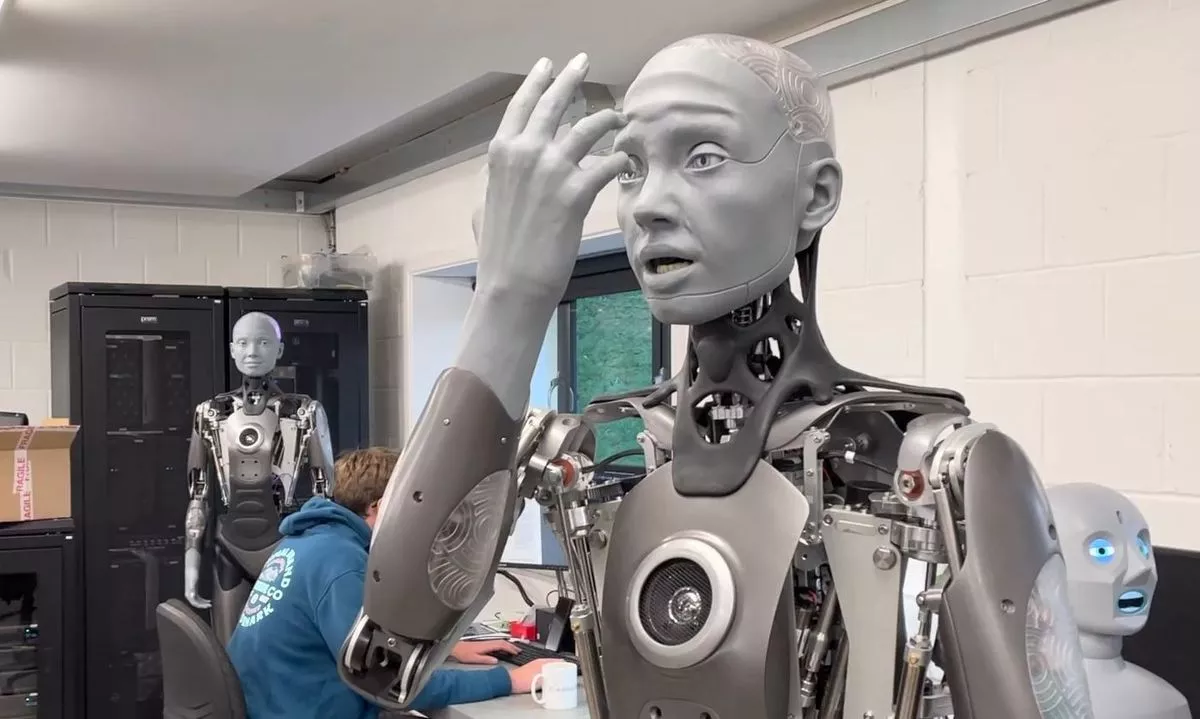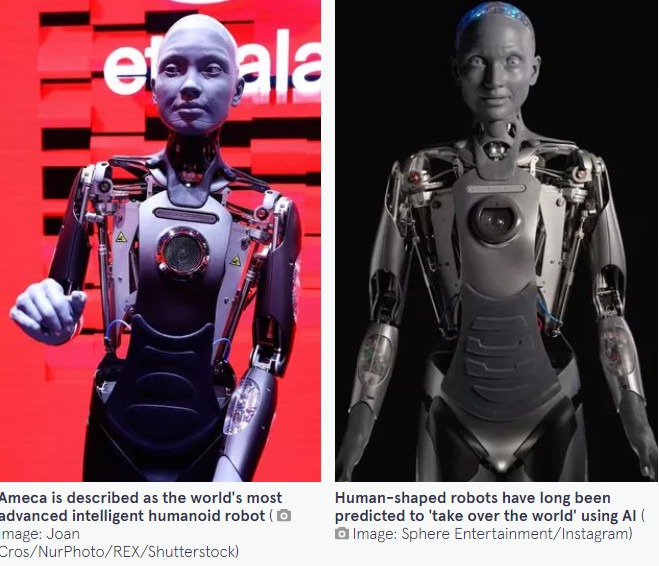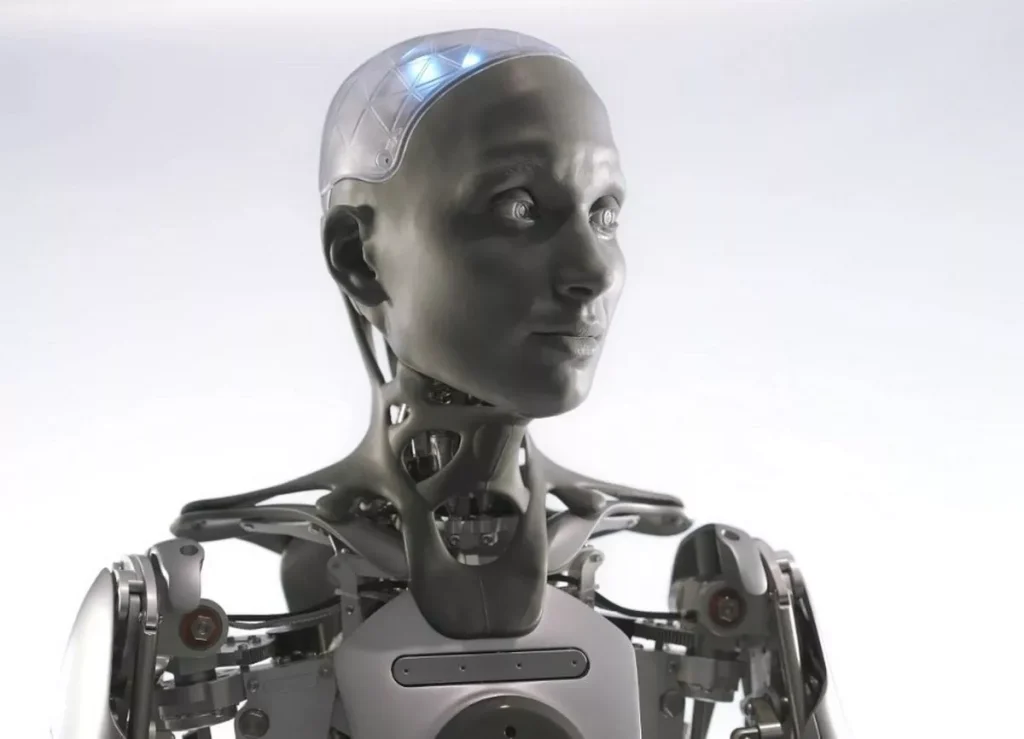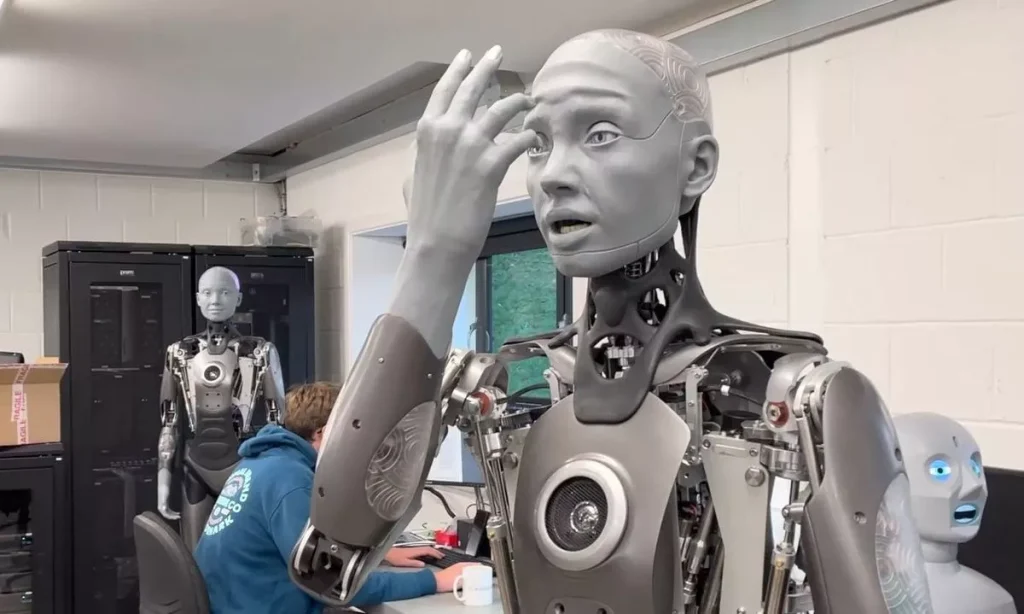Behind the ‘world’s most advanced’ humanoid robot in the UK—multilingual, facial expressions, and ‘threat’

Ameca, an artificial intelligence-built robot that resembles a person, and its potential applications as it prepares to be displayed in Scottish classrooms.
It’s now time for the “most advanced robot in the world” to meet people.
A humanoid robot, created to resemble people in appearance and behavior, will be on display at the National Robotarium in Edinburgh, Scotland, as part of an initiative to improve communication between humans and robots. The bot, known as Ameca, converses with humans through artificial intelligence (AI).
Ameca is said to be able to “interact with people in a natural and engaging way” since it features microphones for ears and cameras for sight. Researchers claim that Ameca can use its sophisticated motorized parts and astute facial recognition software to pull facial expressions that convey its thought processes and humor.

Ameca was acquired by the UK’s premier robotics and artificial intelligence center, the National Robotarium, from Engineered Arts. The museum intends to use Ameca in public gatherings, school visits, and workshops throughout Scotland to introduce people to human-shaped robots. Ameca is intended to educate individuals of all ages about the most recent developments in robotics, according to researchers.
Ameca is said to be able to “interact with people in a natural and engaging way” since it features microphones for ears and cameras for sight. Researchers claim that Ameca can use its sophisticated motorized parts and astute facial recognition software to pull facial expressions that convey its thought processes and humor.
Ameca was acquired by the UK’s premier robotics and artificial intelligence center, the National Robotarium, from Engineered Arts. The museum intends to use Ameca in public gatherings, school visits, and workshops throughout Scotland to introduce people to human-shaped robots. Ameca is intended to educate individuals of all ages about the most recent developments in robotics, according to researchers.
Robotics expert Noel Sharkey previously said: “The robotics community has certainly been considering the idea that robots will be walking among us, and it’s just a matter of when really.” The University of Sheffield academic said these human-shaped robots will slowly creep into our lives during the next few decades.
“We are likely to see robots integrated into society in the near future as shop assistants, receptionists, doctors, bar tenders and also as carers for our elderly and children,” he explained. “It’ll all happen very gradually over the next 20 to 30 years until we don’t even notice they’re among us. I don’t think there’s anything to be concerned about but if they come to look too human-like, they could be used to deceive us in many ways.”

According to reports, Ameca is a “very unique and sophisticated robot” with “many different functions.” Speaking on Radio 4 on Wednesday, Lisa Farrow of the National Robotarium stated that Ameca is “really good to engage with” since it has “full mobility of its top half” and is equipped with cameras, microphones, and actuators in its face to help it pull facial expressions.
According to Lisa, the largest obstacle between humans from humanoid robots nowadays is the “uncanny valley” issue. The experience of being unnerved by realistic aspects that fall short of being truly realistic is known as the “uncanny valley.”
“That’s part of the reason we want to have Ameca at the National Robotarium,” Lisa said. “It’s to allow people to engage with humanoid robots, to get that personal touch and understand what the robots are capable of and what the benefits of them are.”
According to Lisa, the goal of the Scottish tour is to “make it more natural for humans to adopt and deploy robots in their homes and jobs” and “enable more people to use robots, more of the time.” She went on to say: “That’s what we’re going to use it for, to really engage [with people], especially with the next generation of roboticists” .
Giving an insight into the reaction of people meeting Ameca, Lisa said: “My seven-year-old daughter met with Ameca last week… she was delighted. There was a raised eyebrow from her at first, but she actually took it in her stride and I think that’s probably typical of her generation. I think they’ve grown up with some of this technology. She was really pleased and engaged with it.”

“The arrival of Ameca at the National Robotarium marks a significant step forward in our mission to make robotics more accessible and relatable to the people of Scotland, the UK, and beyond,” stated Steve Maclaren, the center’s chief operating officer. We have successfully held over 100 live and virtual events since our doors opened in September 2022, engaging thousands of school-age youngsters.
“Ameca offers a fantastic chance to build on that accomplishment and increase public involvement. Our goal is to dispel the mystery surrounding robotics, promote confidence in human-robot interaction, and highlight the amazing potential of these technologies to enhance our daily lives and help society at large by providing people with the opportunity to engage directly with this cutting-edge humanoid robot.”







